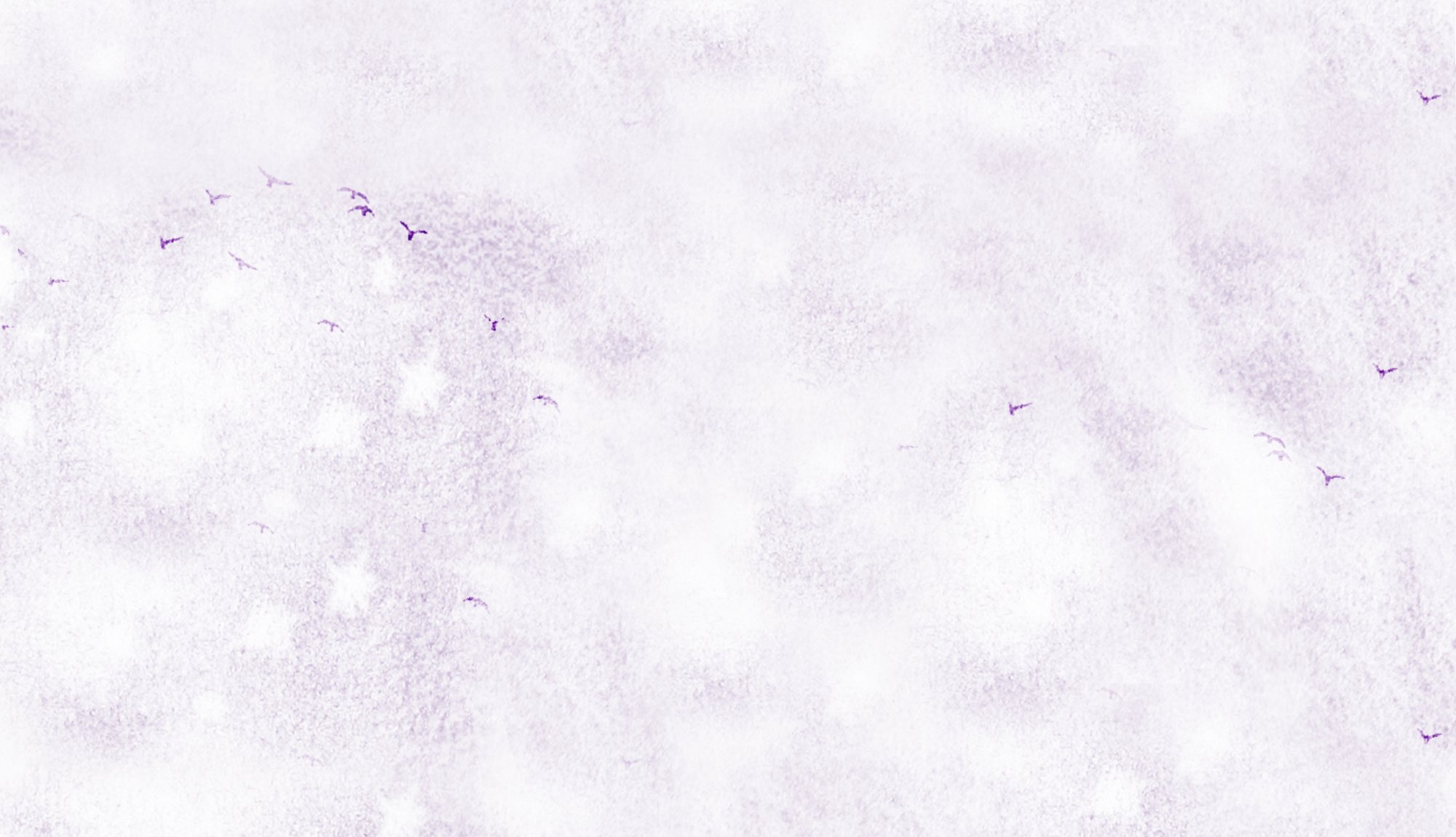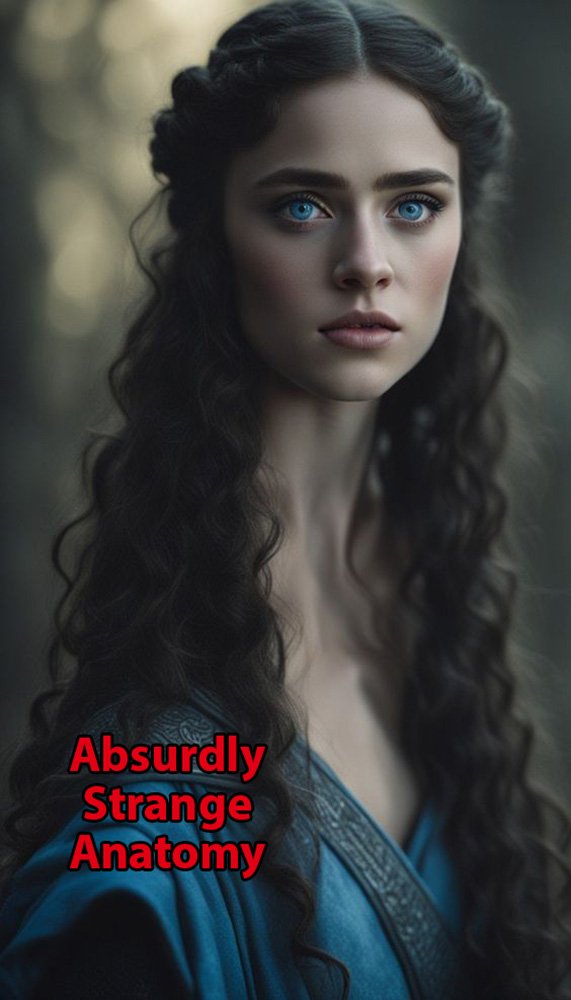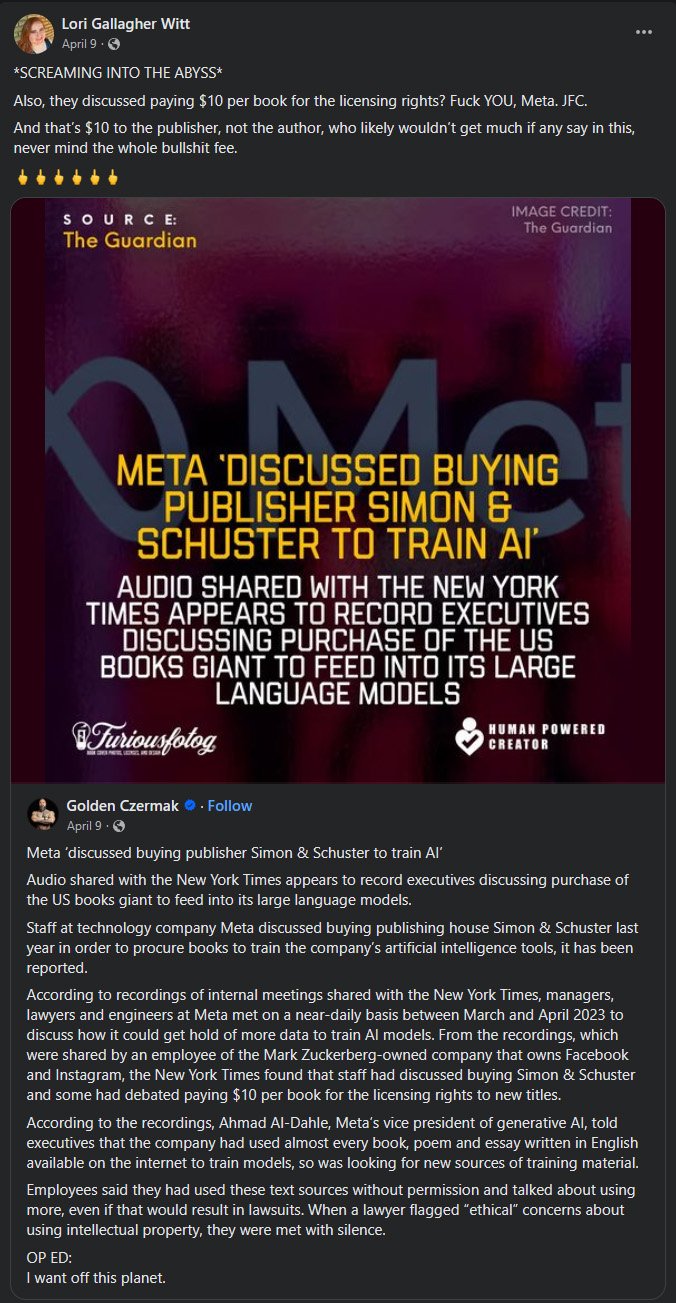
No Artificial Intelligence
All creative aspects of the Devon Vesper brand are 100% Human Made—Guaranteed.
Devon Vesper has a healthy and vast imagination. All aspects of their stories come from their overactive brain, including 100% of the creative prose in their books. Exceptions include short quotes (like Shakespeare quotes a character might reference, e.g., “Parting is such sweet sorrow.”) or short passages as detailed within the Fair Use Copyright Policy. These references are cited on the copyright page of each book. These references are likewise not derived from any AI program but come straight from the source material the references originate from with written permission from the originating author if required by law.
Likewise, Devon Vesper does not and will not use Generative AI art for covers. Their covers are created by the awesome people at GetCovers.com or by Zoe Perdita. Devon trusts these cover artists and companies not to use AI art in their cover-making process. If you worry Devon has used Generative AI art, please contact them for a list of stock photos or iterations for the cover in question.
If you ever see generative AI associated with Devon Vesper, please contact them. As much as they play god with characters and worlds, they still make mistakes, especially when it comes to identifying AI images. Please treat such things as honest mistakes and alert them through the contact form so they may rectify the situation and issue an apology. Devon Vesper always tries to ensure the stock photos and stock art used is human-made, but mistakes can happen. Please alert them with the AI element so they can take it to the stock site to have it properly labeled in their system for authors to make a more informed choice.
Generative AI is art theft. It steals the work of authors, bloggers, digital and traditional artists, voice actors, and more—without compensation, credit to the artists, or alerting said artists to their involvement in such programs. It then puts the source material through a virtual blender and generates audio, images, or text, which almost always shows either outright plagiarism, artists’ blurry signatures, or strange abnormalities in visual renderings, among other tells. Please, if you see AI art, please call it out. Stand up for the artists whose works are being stolen to provide those who are not artists a non-copyrightable generative “art.” Join the revolution.
How to tell if an Image is Generative AI
Some people are attacking those who use programs such as Adobe Illustrator (whose tag is .ai (for Adobe Illustrator) or .eps like an image might be .jpg or .png), DAZ3D, and Photoshop. These programs are legitimate, and have been available—some for decade(s)—long before before AI came into existence. Below are examples of a Generative AI image and a DAZ3D render as well as a photoshop edit. On the AI image, I have circled the “tells” so you can hunt for them like those images where you have to find 7 pineapples, or the differences between two pictures. (No, I’m not an app collector. Not me. Nope.)
Let’s check them out.
Unnamed Arachnataur from Adradis Rising
(Coming eventually in book 7)
DAZ3D Render: Man from hips up, spider base, background, posing, blending, lighting.
Photoshop Edits: Nails, painted hair, more blending to make the man and spider halves look like a cohesive whole.
Posing and Layers: Available upon request.
Astiras, Velithor’s Soul-Mount Dragon
From Eldrakar
DAZ3D Render (Dragon base, posing, lighting)
with Photoshop Edits (Dragon color, eye color, flames)
The Elven King’s Forever Cover Art by Zoe Perdita
Photoshop Composite
She put one man’s head on another man’s body, added a background,
added light sources, painted long hair on the model,
and added the magic he’s wielding.
Plus added text.
King’s Heart Cover
(Poorly Executed by Devon) DAZ3D Render (People)
(Well done by Zoe Perdita) Photoshop Composite
I created the guys in DAZ3D…poorly. The clothes weren’t made for the blond dude (Morough), so there was clipping (where the model’s skin “clips” through the clothes) Zoe had to fix, and that is why his armor skirt looks strange against his legs. It’s also why Kaiden’s jeans look strange. Their faces are rather ew. The hair looks fake because I used hair that didn’t natively fit the models. And I messed up the lighting.
Zoe did her best to fix my mistakes, add the background, add the flame in Kaiden’s hand, try to fix my lighting, add the flare on the sword, and other fixes and additions.
Generative AI Examples
(Not Our Generations)
I found these on Google.
On the left, I have highlighted some of the tells.
On the right is the original gen.
Here’s one that’s a little harder to recognize. I marked what I see. Do you see other tells?
AI is only getting better at creating images with fewer and less obvious tells. The strange hands are almost fixed on some of the major platforms like Midjourney. So are proportions, lighting, and other things AI generators struggle with. It is always learning, and learning it from stolen art.
Please be vigilant.
Here is some discourse on why AI is bad. Much is coming from Lori Gallagher Witt (Prolific author and huge advocate for artists of all types) and Golden Czermak (Owner and photographer for the FuriousFotog® brand, author, and model). But we have other names, as well, from John Cleese to Neil Freaking Gaiman. Buckle up. Here we go.
Jingna Zhang
A Few Takes
Neil Gaiman
Lori Gallagher Witt &
Golden Czermak
Matt Cohen
I hope this helps you understand why artists—cartoonists, authors, traditional or digital artists, voice actors, movie/television actors, and any other type of artist—are up in arms over the use of Generative AI.
AI is theft. AI is not the “prompter’s” creation. AI is not copyrightable. AI “art” is cheating.
AI won’t be welcome until companies (including but not limited to):
procure signed contracts from each artist to be granted permission to use an art piece per piece to train their AI generator
appropriately compensate them based on the artist’s pricing structure
Which I imagine will be a dollar (or local currency) amount per:
generation or X number of generations by a generator’s user base or by sample or X number of samples
commercial art license per sampled image per generation or X number of generations or by sample or X number of samples
non-commercial art license per sampled image per generation or X number of generations or by sample or X number of samples
per finished minute of voice or likeness usage or sampling
and more that I’m probably not thinking of.
ethically and prominently label each commercial licensed “art” piece as an AI generation on each platform the generator posts the “art” for sale
and other requirements based upon each (actual) artist’s contracts, their notoriety, and other factors as (real) artists, their agents, their publishers, etc., deem fit.
We aren’t there yet. And until we are, every time a person uses AI without compensating the creators, each generation takes food out of creators’ mouths, rent and utility money from their bank accounts and credit cards, and their creativity, drive, and focus as they worry about lost revenue, and so much more.
Please help us win this fight in any way you can. The biggest way is never to use Generative AI.
Thank you,
Devon






































